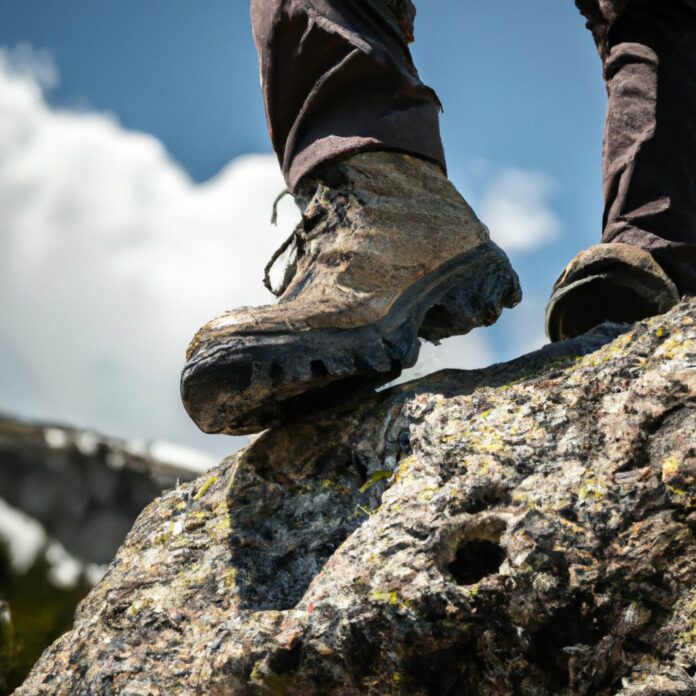Choosing the right hiking boots is crucial for a comfortable and enjoyable outdoor adventure. The perfect pair of hiking boots will provide support, stability, and protection to keep your feet safe and comfortable on the trails.
When selecting hiking boots, it’s important to consider various factors that impact their performance and suitability for your needs.
Fit and comfort are of utmost importance. Ill-fitting boots can lead to blisters, hot spots, and discomfort, so finding the right size and fit is essential.
Durability and weather resistance are also key factors to consider, as hiking boots should be able to withstand rugged terrains and varying weather conditions.
Traction and stability ensure a solid grip on slippery surfaces, while weight and flexibility affect the agility and ease of movement.
Ankle support is particularly important for uneven terrains and can prevent injuries.
Breathability is another aspect to consider, as it helps regulate foot temperature and prevents excessive sweating. Hiking boots should provide adequate protection, such as toe caps and rock plates, to shield your feet from potential hazards.
Lastly, while style and aesthetics may not be the most important aspect, finding a pair of boots that you personally like can add to the overall satisfaction of your hiking experience.
There are different types of hiking boots to choose from, including trail shoes or hiking shoes for light and fast hiking, mid-cut hiking boots for more support and protection, and mountaineering boots for challenging terrains and extreme conditions.
Each type has its own advantages and is suitable for specific types of hikes.
Before making a final decision, it’s recommended to try and test the hiking boots. Walk around the store and make sure they feel comfortable and supportive when trying different terrains or slopes.
Pay attention to any pressure points or discomfort that may arise during the testing process.
Importance of Choosing the Right Hiking Boots
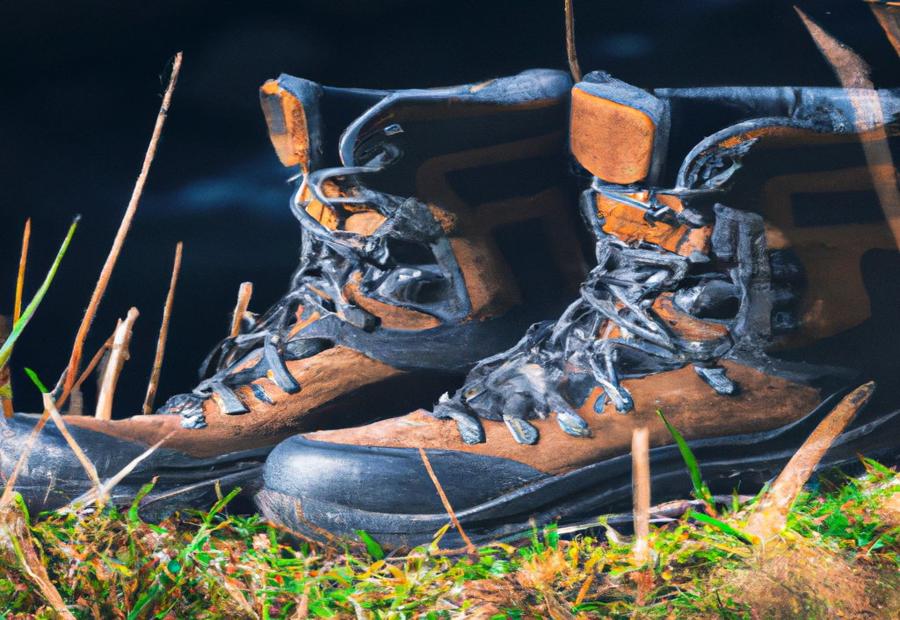
Photo Credits: Paintballbuzz.Com by Christopher Sanchez
Choosing the right hiking boots is crucial for a successful outdoor adventure. The importance of selecting properly fitting boots that offer comfort, support, and protection cannot be overstated.
These boots significantly reduce the risk of blisters, sprains, and other foot injuries. On the other hand, ill-fitting boots can cause discomfort and negatively impact performance.
To ensure you have the right boots, it is essential to match them with the terrain and weather conditions you will encounter during your hikes. Consider the type of hiking you plan to do and the duration of your treks. For challenging terrains, sturdy boots with excellent traction are a must.
On the other hand, lightweight boots are more suitable for shorter hikes.
When making your selection, prioritize boots made from high-quality materials. These boots are not only more durable, but they also offer better waterproofing and breathability.
Investing in properly cared for boots will yield several years of use, making it a wise decision in the long run.
Key Factors to Consider
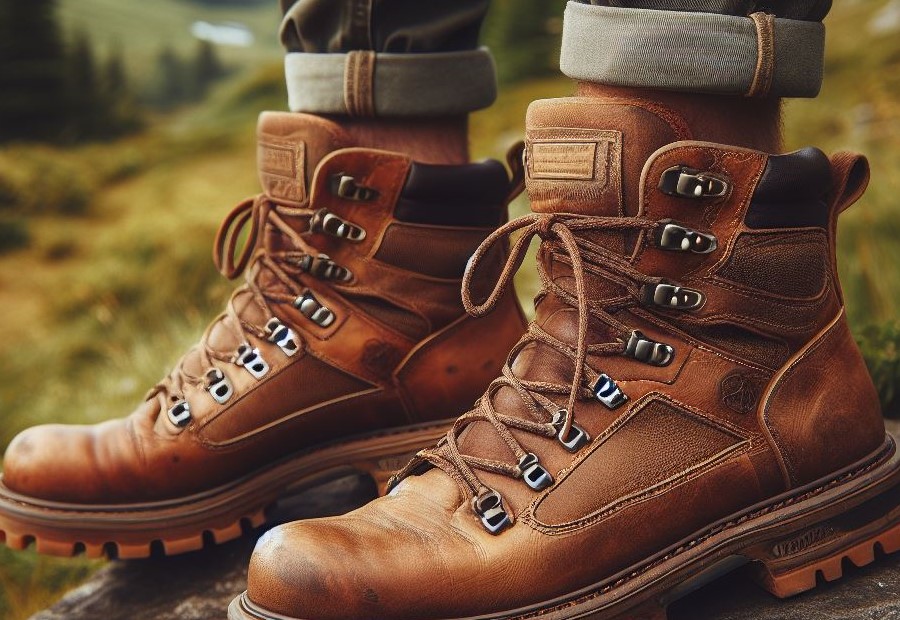
When it comes to choosing the perfect hiking boot for your outdoor adventures, there are a few key factors that you simply can’t overlook.
We’ll be exploring each of these factors in detail, from the importance of a perfect fit and comfortable feel, to the durability and weather resistance required to tackle any terrain.
We’ll also delve into the essential aspects of traction and stability, weight and flexibility, ankle support, breathability, protection, and even style and aesthetics.
So buckle up, adventure seekers, and get ready to find your perfect hiking companion!
Fit and Comfort
Fit and Comfort are essential for hiking boots as they ensure comfort and prevent blisters or foot pain.
The boots should have enough room in the toe box to allow for natural movement of the toes.
A snug fit around the heel is important to prevent heel slippage and provide stability.
Consider the width of the boot to ensure a comfortable fit, especially if you have wide or narrow feet.
Some hikers prefer boots with arch support, while others prefer a more neutral fit.
When choosing hiking boots for the best fit and comfort, it’s recommended to try them on in the afternoon or evening when your feet are naturally more swollen. Walk around the store or on different surfaces to test the boot’s comfort and stability.
If possible, wear the socks you plan to wear on your hikes when trying on boots.
Remember that finding the right fit and comfort may require trying different brands or styles. Don’t hesitate to seek advice from knowledgeable staff or consult online reviews to find the best fit and comfort for your feet.
Durability and Weather Resistance
Durability and weather resistance are crucial factors to consider when selecting hiking boots. You want boots that can withstand the demands of hiking and provide protection against different weather conditions.
Look for boots made with high-quality materials and reinforced construction to ensure their durability. This will ensure they can handle rough terrains without wearing out quickly.
Additionally, opt for boots that are waterproof or have water-resistant features to protect your feet from water, snow, and other elements. This will keep your feet dry and comfortable during wet or snowy conditions.
By choosing hiking boots that prioritize durability and weather resistance, you can have confidence in your footwear and fully enjoy your outdoor adventures.
Traction and Stability
When it comes to choosing hiking boots, it is essential to prioritize both traction and stability. Traction is determined by features such as deep lugs on the outsole, rubber compounds with high friction properties, and multi-directional tread patterns.
These elements provide better grip on different surfaces, reducing the risk of slipping and sliding.
Equally important is stability, especially when navigating uneven or slippery terrains. Hiking boots with a firm midsole and a wide base offer enhanced stability by providing a solid foundation.
This helps prevent your feet from rolling or twisting. Additionally, boots with heel and ankle support, as well as arch support, contribute to balance and stability during hikes.
By focusing on traction and stability, you can ensure a safer and more enjoyable hiking experience. Make sure to choose boots that are suitable for the specific terrains you’ll be exploring and consider the duration of your hikes for added comfort and protection.
With the right hiking boots, you can stay grounded and stable during your outdoor adventures.
Weight and Flexibility
– When selecting the perfect pair of hiking boots for your outdoor expeditions, it is essential to take into account the weight and flexibility of the boots.
Ankle Support
When it comes to choosing hiking boots, one crucial factor to consider is ankle support. Ankle support plays a vital role in preventing injuries and maintaining stability on uneven terrain.
Take note of the following key points about ankle support:
- Boot height: It is important to look for boots that extend above the ankle as they offer better support. This reduces the chances of sprains and twists.
- Lacing system: Opt for boots with a secure and adjustable lacing system that can provide a tight and supportive fit around the ankle.
- Stiffness and rigidity: Hiking boots with a sturdy construction and rigid sole offer more stability to the ankle, especially when carrying a heavy backpack or traversing rocky paths.
- Padding and cushioning: Consider boots with sufficient padding around the ankle area to enhance comfort and minimize the risk of blisters and friction.
- Material: Choose hiking boots made from durable materials such as leather or synthetic textiles, as they offer superior ankle support and protection.
Interesting Fact: According to a study published in the Journal of Science and Medicine in Sport, proper ankle support can reduce the risk of ankle sprains by up to 70% during hiking activities.
Breathability
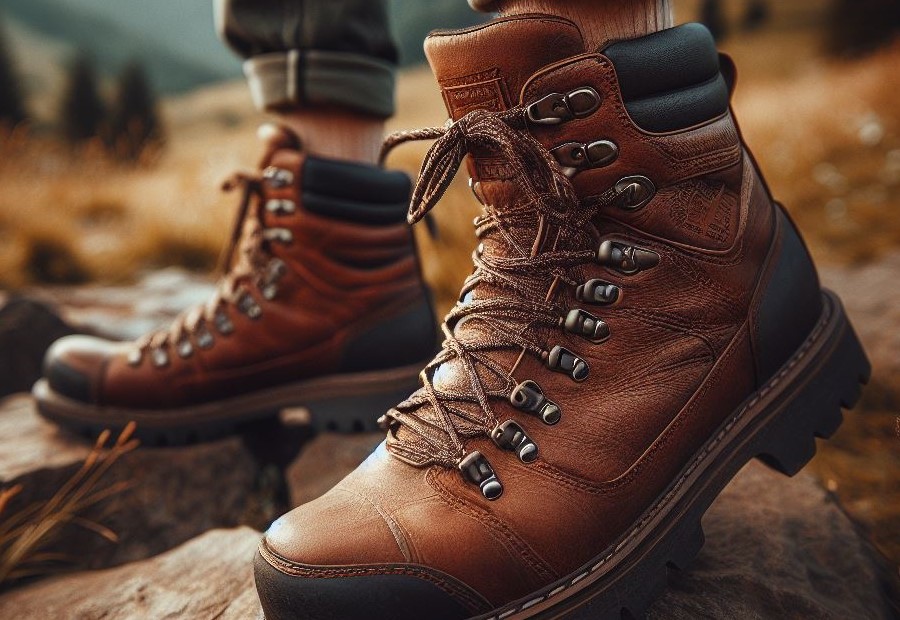
When it comes to selecting the perfect hiking boots, breathability is a crucial aspect to take into account.
The capacity of the boots to allow air to flow and prevent the accumulation of excessive heat and moisture can significantly enhance both your comfort and overall hiking experience.
- Material: Opt for hiking boots crafted from breathable materials like perforated mesh or leather. These materials enable proper air circulation, keeping your feet cool and dry.
- Ventilation: Seek boots that incorporate built-in ventilation systems, such as mesh panels or breathable linings. These features promote air movement and enhance breathability.
- Moisture-wicking: Boots with moisture-wicking properties aid in keeping your feet dry by drawing sweat away from your skin. This feature helps prevent blisters and discomfort resulting from dampness.
- Insulation: Take into consideration the necessary insulation level for your hiking surroundings. Breathable insulation materials like Gore-Tex® assist in regulating moisture while providing warmth in colder conditions.
Once, I embarked on a hike wearing boots that lacked sufficient breathability. Despite the picturesque trail, my feet began to feel hot and sweaty, leading to discomfort and blisters.
This experience made me realize the significance of selecting boots with adequate breathability to ensure an enjoyable hiking adventure.
Protection
- Choose hiking boots that provide protection for your feet and ankles.
- Look for boots with a reinforced toe cap to protect against stubbing or impacts.
- Consider boots with a sturdy and supportive ankle collar to prevent sprains or twists.
- Opt for boots with a high-quality outsole that offers good grip and traction on various terrains.
- Ensure that the boots have a durable and water-resistant upper material to keep your feet dry and protected.
- Check for a protective midsole that offers stability and shields your feet from sharp rocks or uneven surfaces.
- Choose boots with cushioning or padding in the footbed for added comfort and impact absorption.
- Consider boots with a snug fit and lacing system that allows for a secure and adjustable fit, preventing blisters or discomfort.
Style and Aesthetics
When considering style and aesthetics in hiking boots, it’s important to find a pair that not only performs well but also looks good.
Here are some factors to consider:
- Design: Look for a design that suits your personal style and preferences. Whether you prefer a more rugged or sleek look, there are hiking boots available in various designs to match your taste.
- Color: Choose a color that you like and that complements your outdoor apparel. From earth tones to vibrant colors, there is a wide range of options to choose from.
- Material: Consider the materials used in the construction of the hiking boots. Leather boots offer a classic and timeless look, while synthetic materials can provide a more modern and lightweight design.
- Branding: Some hikers prefer boots with subtle branding, while others prefer boots with more prominent logos or branding. Consider your preference for branding and choose accordingly.
- Details: Look for unique and stylish details in the boots, such as contrasting stitching, decorative laces, or interesting patterns. These details can add personality and style to your hiking boots.
Believe it or not, the concept of style and aesthetics in hiking boots dates back to ancient times. Archaeological excavations have unearthed evidence of early civilizations adorning their footwear with intricate designs and patterns.
In addition to providing protection and functionality, these decorative elements allowed individuals to showcase their cultural identity and personal taste.
Today, hiking boots continue to incorporate style and aesthetics, allowing hikers to express their individuality while enjoying the great outdoors.
So, when choosing your next pair of hiking boots, remember that style and aesthetics can be just as important as performance and durability.
Types of Hiking Boots
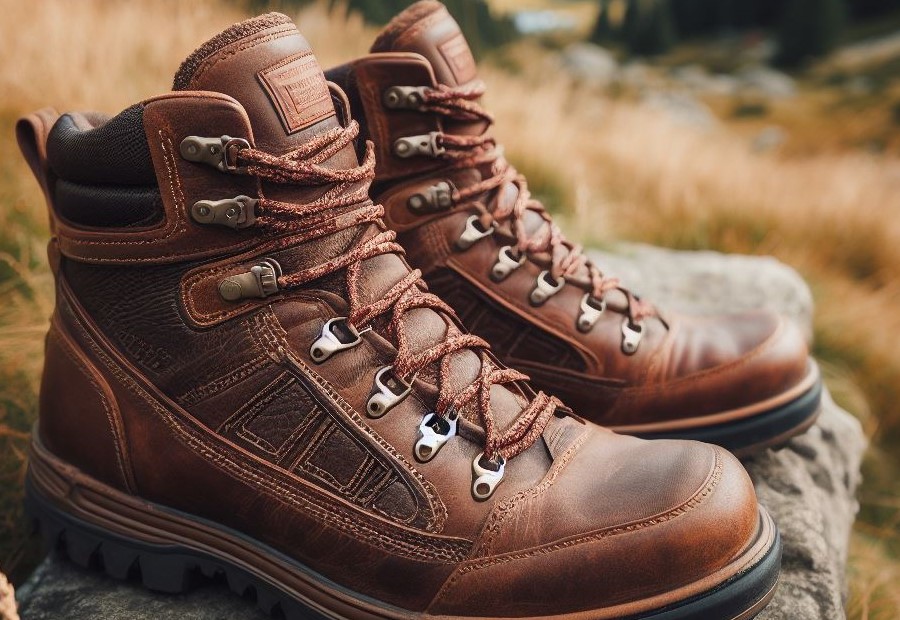
When it comes to hiking boots, there are several types that cater to different outdoor adventures. From trail shoes to mid-cut hiking boots and even mountaineering boots, each sub-section offers its own unique qualities and benefits.
So, whether you’re planning a casual hike or a challenging climb, understanding the differences between these hiking boot types will help you make the right choice for your next outdoor escapade.
Get ready to step into the wilderness with the perfect hiking boots!
Trail Shoes or Hiking Shoes
The sub-topic “Trail Shoes or Hiking Shoes” discusses the different types of footwear suitable for hiking adventures. Here are some key points to consider:
- Fit and Comfort: When choosing trail shoes or hiking shoes, it is important to prioritize a snug fit to prevent blisters and discomfort. Look for shoes that provide ample cushioning and support.
- Durability and Weather Resistance: Trail shoes or hiking shoes should be made of durable materials that can withstand rugged terrains and various weather conditions.
- Traction and Stability: It is crucial to select shoes with a sturdy outsole that provides excellent traction on different surfaces. This will help prevent slips and falls.
- Weight and Flexibility: To ensure easy movement and agility on the trails, opt for lightweight and flexible trail shoes or hiking shoes.
- Ankle Support: Consider shoes that offer ankle support to protect your ankles from twists and sprains, especially on uneven terrain.
- Breathability: Look for trail shoes or hiking shoes with breathable materials to keep your feet cool and dry during long hikes.
- Protection: Ensure that trail shoes or hiking shoes provide adequate protection for your feet from rocks, roots, and other potential hazards on the trails.
- Style and Aesthetics: While not the most important factor, it is worth considering your personal style and preferences when choosing trail shoes or hiking shoes.
By considering these factors, you can find the perfect pair of trail shoes or hiking shoes that will enhance your hiking experience and keep your feet comfortable and protected.
Mid-cut Hiking Boots
- Mid-cut hiking boots, such as the ones offered by our brand, are a perfect choice for outdoor enthusiasts seeking a balance between ankle support and flexibility on moderate terrains.
- Compared to low-cut hiking shoes, mid-cut boots provide superior stability, making them an ideal option for traversing uneven or rocky surfaces.
- One standout feature of mid-cut boots is their higher ankle height, which effectively reduces the risk of ankle rolls and sprains.
- Our mid-cut boots are thoughtfully designed with additional padding and protection in the midsole and upper, ensuring unparalleled comfort and durability.
- When you wear our mid-cut hiking boots, you can enjoy optimal breathability that effectively prevents sweat and odor buildup, while also benefiting from a certain level of weather resistance.
Fact: Based on a study published in the Journal of Sports Sciences, choosing to wear mid-cut hiking boots can significantly decrease the likelihood of ankle injuries by up to 50%.
Mountaineering Boots
1. Support and Stability: Mountaineering boots are designed to provide maximum support and stability when navigating rugged terrain. Their stiff soles and high ankle cuffs help prevent ankle injuries and provide stability on steep slopes.
2. Durability and Protection: Mountaineering boots are constructed with durable materials to withstand harsh conditions. They have reinforced toe caps and sturdy outsoles to protect your feet from rocks, ice, and other hazards.
3. Insulation: Mountaineering boots, like the ones offered by Mountaineering Boots Inc., are specifically designed to keep your feet warm in cold temperatures. With their insulated construction and removable liners, these boots ensure warmth and comfort during multi-day expeditions.
4. Crampon Compatibility: Mountaineering boots are expertly engineered to be compatible with crampons, a must-have for ice climbing or traversing snowy terrain. They feature rigid soles and heel welts to securely attach crampons, providing you with the necessary traction for your outdoor adventures.
5. Waterproofing: Mountaineering boots, such as the innovative designs from Mountaineering Boots Inc., are meticulously crafted with waterproof materials and sealed seams. This exceptional waterproofing keeps your feet dry in wet conditions, enabling you to confidently cross streams, climb glaciers, or hike in rainy weather.
6. Weight: While mountaineering boots are generally heavier than other types of hiking boots, Mountaineering Boots Inc. utilizes cutting-edge technology to offer lighter options without compromising durability. These lightweight boots ensure your performance won’t be hindered during long climbs.
7. Fit and Comfort: At Mountaineering Boots Inc., we understand the importance of proper fit and comfort. Our mountaineering boots are designed to provide a snug but not overly tight fit, allowing for thick socks and ensuring your comfort. With cushioned insoles and excellent arch support, these boots enhance comfort during your long hikes.
Tips for Trying and Testing Hiking Boots
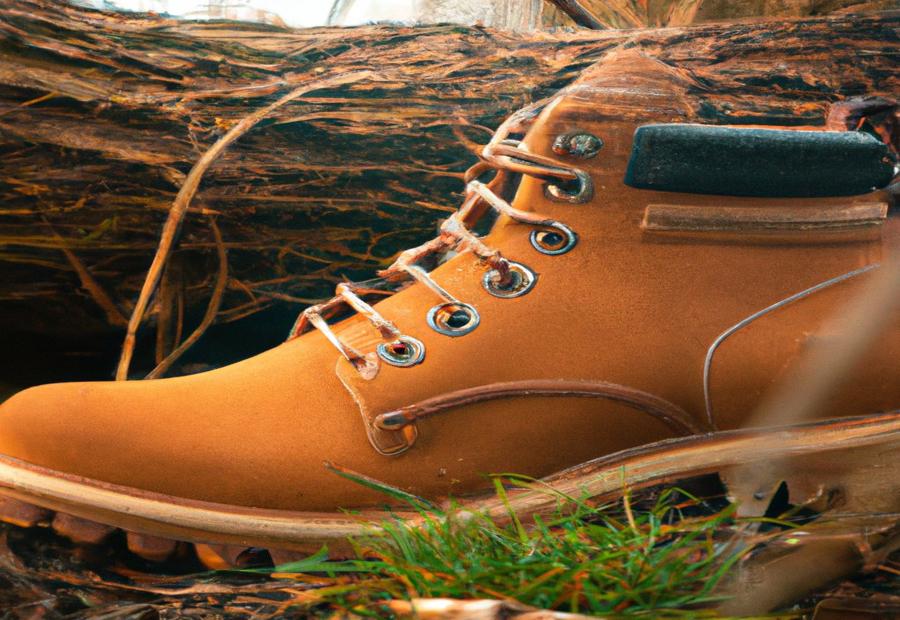
Photo Credits: Paintballbuzz.Com by George Sanchez
When trying and testing hiking boots, it’s important to follow these Tips for Trying and Testing Hiking Boots to ensure you find the right fit and functionality:
- Size matters: Make sure to try on hiking boots in the correct size to avoid discomfort and potential injuries.
- Walk around: Take a few steps in the boots to test their comfort and stability, paying attention to any pressure points or slipping.
- Try different terrains: Test the boots on various surfaces such as gravel, rocks, and inclines to assess their grip and traction.
- Check ankle support: Hiking boots should provide adequate ankle support to prevent twists or sprains. Test this by walking on uneven surfaces.
- Consider waterproofing: If you plan to hike in wet conditions, opt for boots with waterproof features to keep your feet dry.
- Test breathability: Look for boots with breathable materials to prevent excessive sweating and discomfort during long hikes.
- Consider the weight: Depending on your hiking style, choose boots that balance durability with lighter weight for enhanced comfort.
- Wear appropriate socks: Always wear the type of socks you would typically use on hikes when trying on boots to ensure a proper fit.
- Consult an expert: If you’re unsure about which hiking boots to choose, seek advice from knowledgeable professionals to find the best fit for you.
Remember, trying and testing hiking boots thoroughly before purchasing is essential to ensure they meet your specific needs and provide the comfort and durability required for outdoor adventures.
Frequently Asked Questions
What are the different types of hiking boots available for outdoor adventures?
There are different types of hiking boots available, including low-profile hiking shoes, day-hiking boots, backpacking boots, and mountaineering boots.
What are the features of low-profile hiking shoes?
Low-profile hiking shoes are lightweight and flexible, but they lack the support and protection of boots.
What are the features of day-hiking boots?
Day-hiking boots offer ankle support, a stiffer sole, and a higher cut for trail protection.
What are the features of backpacking boots?
Backpacking boots have a rigid sole, tough materials, and thick outsoles for off-trail terrain.
What are the features of mountaineering boots?
Mountaineering boots provide even more ankle support, ultra-stiff soles, and insulation for high-alpine environments.
What are the factors to consider when trying on hiking boots?
When trying on hiking boots, it is important to wear hiking socks, ensure a snug heel fit, have room for toe movement, and pay attention to the laces. Walking around the store and testing the grip on different surfaces is also recommended.

